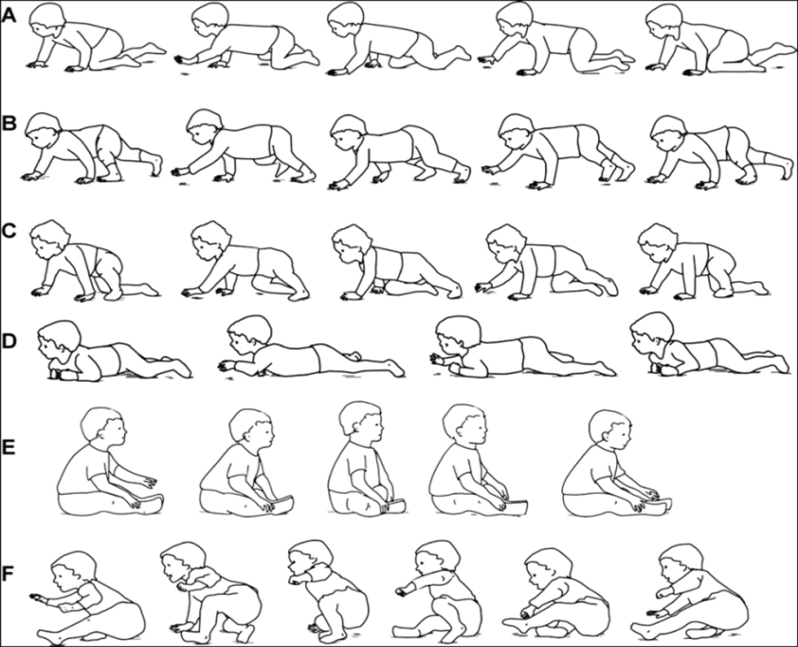Types of Crawlers
- A = Reciprocal creeping/crawling: typical and important
- B = Bear crawling: typical and seen in later stages
- C = 3 point crawl: atypical if it is their primary way of crawling
- D = Army/commando crawling: typical and seen in early stages
- E = Bum scooting/shuffling: atypical if it is their primary way of crawling
- F = Side shuffle: atypical if it is their primary way of crawling
What does it mean if my child does not use reciprocal crawling?
When a child uses 3 point crawling, bum scooting, or side shuffling, (C, E and F) as their primary means of moving around on the floor, it can indicate muscle weakness and tightness on one side of the body. This may lead to a delay in future motor milestones.
How can I help my child learn to reciprocal crawl?
- Provide lots of opportunity for tummy time
- Promote time playing on hands and knees on the floor
- Reduce time in exersaucers, jolly jumpers and other containers
Why is reciprocal crawling important?
- Strengthens muscles in the arms, hands, legs, core and neck
- Promotes coordination between both sides of the body
- Promotes hand-eye coordination
- Improves body awareness and develops the sensory system
- Promotes brain development
- Prepares for pulling to stand, standing and walking
- Promotes motor planning





